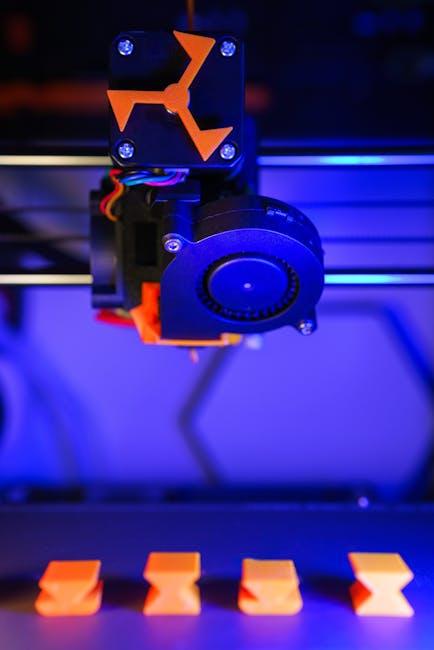
Dental Market Embraces 3D Innovation – Dentistry Today
The dental market is undergoing a remarkable transformation, driven by rapid advances in 3D innovation. From 3D printing to digital scanning and computer-aided design (CAD), these technologies are revolutionizing how dental professionals improve patient care, streamline workflows, and create customized solutions. This article explores the latest 3D innovations in dentistry, their benefits, practical applications, and what the future holds for dental practices and laboratories embracing these cutting-edge tools.
Understanding 3D Innovation in Dentistry
3D innovation refers to the integration of three-dimensional technologies into dental procedures. These include:
- 3D printing: The fabrication of dental appliances, crowns, bridges, and surgical guides layer-by-layer from digital files.
- Digital dental impressions: Utilizing intraoral scanners to capture accurate 3D images of teeth and gums without traditional molds.
- CAD/CAM systems: Software platforms that assist dental professionals in designing and manufacturing restorations with precision.
Key Technologies Shaping the 3D Dental Market
- Intraoral Scanners: Devices like iTero and TRIOS enable quick, comfortable, and precise digital impressions.
- 3D Printers: Printers such as Formlabs Form 3B and EnvisionTEC’s Vida create dental models, aligners, and prosthetics efficiently.
- CBCT Imaging: Cone Beam Computed Tomography provides 3D radiographic imaging essential for implant placement and surgical planning.
- Design Software: Software like Exocad, 3Shape, and Dental Wings help customize restorations and simulate outcomes.
Benefits of 3D Innovation in Dentistry
The integration of 3D technologies in dentistry offers extensive benefits, including:
- Enhanced Precision: Digital and additive manufacturing processes ensure restorations fit with micrometer-level accuracy.
- Reduced Turnaround Time: Faster production workflows allow same-day crowns and quicker treatment plans.
- Improved Patient Experience: No more messy traditional impressions; intraoral scanners are more comfortable and less invasive.
- Cost-Effectiveness: Streamlined lab and chairside procedures minimize costs for practices and patients.
- Customization & Flexibility: Easily modify digital models to meet unique patient needs.
- Better Predictability: 3D imaging assists in accurate diagnosis and treatment planning.
Table: Comparison of Traditional vs. 3D Technology in Dentistry
| Aspect | Traditional Methods | 3D Technology |
|---|---|---|
| Impression Technique | Physical molds, messy, time-intensive | Digital scanning, fast, clean |
| Production Time | Days to weeks | Hours to same day delivery |
| Accuracy | Variable, prone to error | Highly precise, reproducible |
| Patient Comfort | Uncomfortable molds and trays | Non-invasive scanning |
| Customization | Limited flexibility | Flexible and easily editable |
Practical Tips for Implementing 3D Innovation in Your Dental Practice
Adopting 3D technology can seem overwhelming, but with the right approach, dental practices can seamlessly integrate these tools. Here are some practical tips:
- Start with Training: Invest in comprehensive education for your team on scanner use and software navigation.
- Choose the Right Equipment: Evaluate your practice needs and budget to select the best 3D printers and scanners.
- Integrate with Existing Workflow: Gradually incorporate digital impressions and CAD/CAM to complement traditional methods before full transition.
- Collaborate with Dental Labs: Ensure labs you work with are proficient in 3D workflows and compatible file exchanges.
- Focus on Patient Communication: Use 3D visuals to demonstrate treatment plans, increasing patient trust and acceptance.
- Monitor Costs and ROI: Assess technology investments against efficiency gains and patient satisfaction improvements.
Case Study: How 3D Innovation Transformed a Dental Clinic
BrightSmile Dental Clinic, a midsize practice located in Austin, Texas, integrated an intraoral scanner and in-office 3D printer in 2022. Within six months, they achieved:
- Reduction in crown production time from five days to same day delivery
- 35% increase in patient retention due to enhanced experience
- Lowered outsourcing costs by producing aligners and surgical guides in-house
- Improved diagnostic capabilities with CBCT and 3D software integration
The clinic reported that the adoption of 3D innovation not only improved clinical outcomes but also boosted overall operational efficiency.
The Future Outlook: What’s Next for 3D Dentistry?
As 3D technology continues to evolve, the dental market will likely see innovations such as:
- AI-Driven Design: Artificial intelligence assisting in automatic creation of restoration designs.
- Bioprinting: Printing living tissues and customized implants to regenerate damaged dental structures.
- Cloud-Based Collaboration: Real-time sharing of 3D models between clinics and labs globally.
- Wearable 3D Scanners: More compact, ergonomic devices improving scanning ease and accuracy.
These advancements promise to elevate care standards and patient outcomes even further, making 3D innovation indispensable for modern dentistry.
Conclusion
The dental market’s embrace of 3D innovation marks a pivotal shift toward more precise, efficient, and patient-friendly care. From digital impressions to in-house 3D printing, these technologies empower dental professionals to deliver superior restorations with faster turnaround times and enhanced customization. With ongoing technological breakthroughs on the horizon, dentists and laboratories that invest in 3D workflows will be well-positioned to lead the future of dentistry today.


